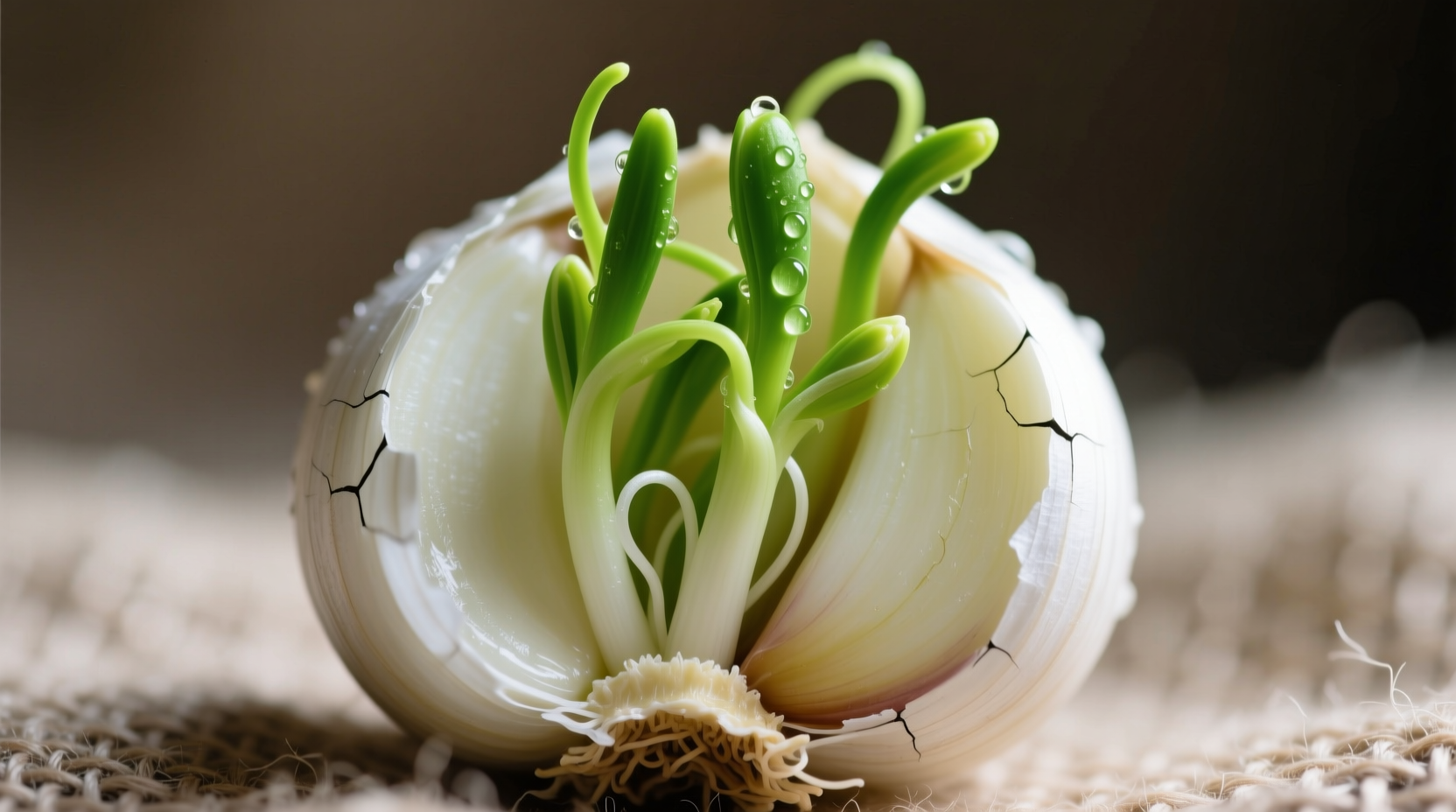Why Your Garlic Turns Green: The Science Explained
Discovering green streaks or patches inside your garlic cloves can be alarming, but in most cases, it's a completely natural chemical reaction rather than a sign of spoilage. This phenomenon occurs due to enzymatic browning reactions similar to those that make apples turn brown after cutting.
Garlic contains an enzyme called alliinase and sulfur-containing compounds that, when damaged through cutting, crushing, or natural aging, react with polyphenols (natural plant compounds). When these compounds interact with trace metals or acidic conditions, they form green pigments called chlorogenic compounds. This same reaction causes the green color in pickled garlic or garlic cooked with wine or vinegar.

Safe Green vs. Unsafe Green: How to Tell the Difference
Not all green garlic is created equal. Understanding the difference between harmless enzymatic greening and actual spoilage is crucial for food safety. Here's how to distinguish between the two:
| Natural Greening | Signs of Spoilage |
|---|---|
| Uniform green or blue-green coloration | Fuzzy green or black mold growth |
| Firm, crisp texture | Soft, mushy, or slimy texture |
| Pleasant garlic aroma | Sour, rotten, or unpleasant odor |
| May occur during pickling or cooking | Often accompanied by yellow or brown spots |
Common Situations That Cause Garlic to Turn Green
Understanding the specific conditions that trigger greening helps you determine whether your green garlic is safe:
Refrigeration Effects
Storing garlic in the refrigerator can accelerate enzymatic reactions. The cold temperature doesn't kill the enzymes but slows other metabolic processes, allowing the green pigments to form more visibly. This is particularly common with pre-peeled garlic cloves sold in containers.
Cooking Interactions
When garlic is cooked with acidic ingredients like lemon juice, vinegar, or wine, the pH change triggers the enzymatic reaction that produces green pigments. This often happens in aioli, salad dressings, or pickled garlic preparations. The University of California Cooperative Extension confirms this is a natural reaction that doesn't affect safety (UCANR.edu).
Natural Aging Process
As garlic ages, even at room temperature, the enzymatic reactions continue slowly. Older garlic may develop green sprouts in the center (the germ) and sometimes greenish discoloration throughout the clove. While the green sprout itself is bitter, the surrounding garlic remains safe to eat if firm and odor-free.
Practical Guidance for Using Green Garlic
When you encounter green garlic, follow these practical steps:
Step 1: Conduct a Safety Check
Before using green garlic, perform these quick checks:
- Squeeze gently: Should feel firm, not soft or mushy
- Smell carefully: Should have normal garlic aroma, not sour or rotten
- Inspect closely: Look for fuzzy mold (discard if present)
Step 2: Determine Best Usage
If your green garlic passes the safety check:
- For raw applications: The green parts may have slightly more bitter notes, so consider removing visible green streaks for delicate dishes
- For cooked dishes: The flavor difference is minimal after cooking, so use the entire clove
- For pickling: Embrace the color! Green garlic adds visual interest to pickled vegetables
Step 3: Proper Storage to Minimize Greening
To prevent premature greening:
- Store whole bulbs in a cool, dark, dry place with good air circulation
- Avoid refrigerating unpeeled garlic (exceptions: pre-peeled cloves must be refrigerated)
- Use stainless steel or glass containers when storing peeled garlic
- Consume within 3-5 days after peeling
Debunking Common Garlic Myths
Several misconceptions surround green garlic that need clarification:
Myth: Green garlic is moldy and dangerous
Fact: Natural enzymatic greening is completely different from mold growth. Mold appears as fuzzy patches, often with multiple colors, while enzymatic greening creates uniform blue-green streaks.
Myth: Green garlic has gone bad and lost nutritional value
Research from the National Center for Biotechnology Information shows that while some compounds change during the greening process, garlic retains most of its beneficial allicin content and antioxidant properties (NCBI study).
Myth: All green garlic tastes bitter
Fact: While the green germ (sprout) can be bitter, the surrounding clove typically maintains normal flavor, especially after cooking. The bitterness only becomes noticeable in raw applications with significant greening.
When Green Garlic Signals Trouble
While most green garlic is safe, certain conditions warrant discarding it:
- Green discoloration accompanied by soft, mushy texture
- Fuzzy growth (mold) visible on the surface
- Unpleasant sour or rotten odor
- Yellow or brown spots alongside green areas
When in doubt, follow the USDA Food Safety and Inspection Service guideline: "When food doesn't look or smell right, throw it out" (USDA FSIS).











 浙公网安备
33010002000092号
浙公网安备
33010002000092号 浙B2-20120091-4
浙B2-20120091-4